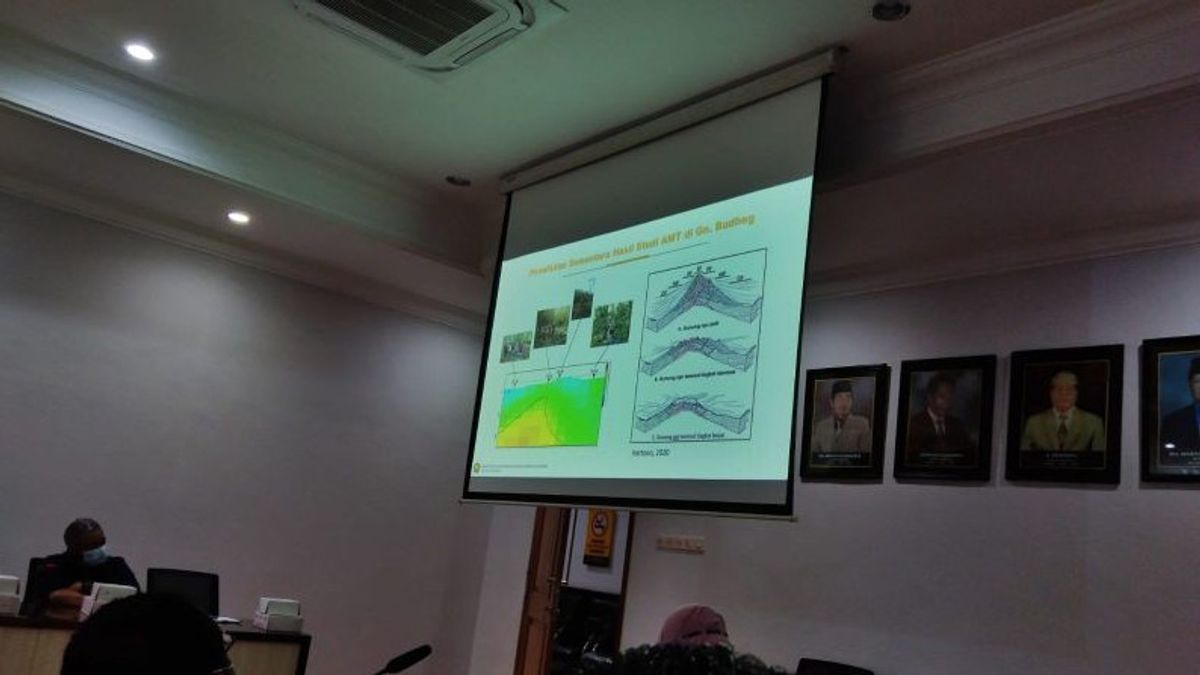TULUNGAGUNG - A team of geologists from the Geological Survey Center of the Geological Agency of the Ministry of Energy and Mineral Resources managed to identify a massive volume rock structure buried under the soil layer of Mount Budeg, Tulungagung, East Java, which is suspected to be an ancient volcanic crater.
The rock structure that was formed was the result of intrusion from the edge of an ancient volcanic crater that was 20 million to 30 million years old.
"The anomaly or abnormality that we found based on the results of this geophysical scan in the form of a tunnel is strongly suspected of being a breakthrough rock from the periphery of an ancient volcanic crater in Tulungagung," explained the Head of the Survey Team from the Geological Survey Center of the ESDM Geological Agency, Hidayat when presenting the mapping results at the office. The Regional Development Planning Agency (Bappeda) of Tulungagung Regency, East Java was reported by Antara, Wednesday, March 23.
At the beginning of his presentation, Hidayat stated that the scans carried out using a magnetic gradient device and ground penetrating radar (GPR) were to map the distribution of objects in the ground, using a geological and archaeological approach.
At Mount Budeg, for example, the team found new facts that the anomaly or abnormality due to the arrangement of massive solid objects beneath the rocky mountain soil was not vertical or perpendicular as previously assumed.
"The shape of the intrusion is oblique, to the southeast. It tilts towards the sea but tilts to the west," he explained.
Hidayat said that his party strongly suspected that the graphic image they had detected due to the sound wave anomaly produced by the special detector was a hard rock structure (andesite) formed by the hardening of ancient volcanic magma in the soil layer.
This tunnel-shaped rock is strongly suspected to be a breakthrough rock from the edge of an ancient volcanic crater in Tulungagung.
"There are two things that make us conclude like that, from the literature and satellite imagery," he said.
From the captured satellite image, there are former ancient volcanic craters in the southern region of Tulungagung, with the diameter of the crater formed reaching 2.7 kilometers. This indicates that there is a giant volcano in the vicinity.
The mountain has passed its explosive period and now leaves a trail of a caldera-shaped crater.
The biggest anomaly occurred in Sendang Hamlet, Kendit Hamlet, Responsi Village, Campurdarat District.
Mentioned the possibility of this ancient mountain being active again, Hidayat explained that there are several characteristics if the mountain is active, namely the presence of seismic activity or earthquakes around the mountain.
The English, Chinese, Japanese, Arabic, and French versions are automatically generated by the AI. So there may still be inaccuracies in translating, please always see Indonesian as our main language. (system supported by DigitalSiber.id)













